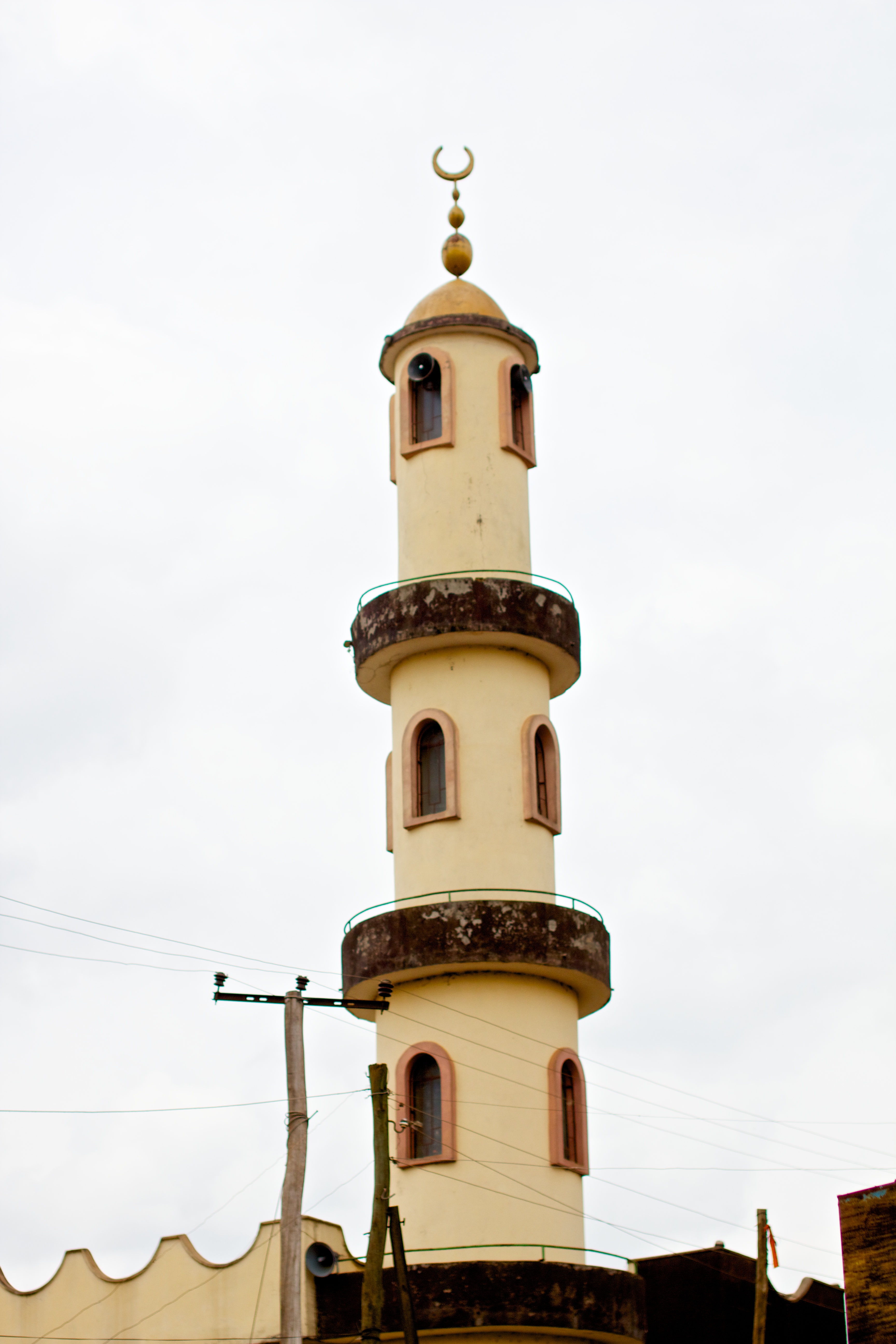|
Bitis Parviocula
:''Common name: Bale Mountains adder, Ethiopian mountain adder,Mallow D, Ludwig D, Nilson G. 2003. ''True Vipers: Natural History and Toxinology of Old World Vipers''. Malabar, Florida: Krieger Publishing Company. 359 pp. .Spawls S, Branch B. 1995. ''The Dangerous Snakes of Africa''. Ralph Curtis Books. Dubai: Oriental Press. 192 pp. . Ethiopian viper, Ethiopian mountain viper.'' ''Bitis parviocula'' is a venomous viper species found only in Ethiopia. It is large with a broad head and spectacular geometric markings. In 1995, the species was known from only three specimens, but additional information has surfaced since then. Little is known about its natural history or its venom.Largen, M., and Spawls, S. 2010. ''The Amphibians and Reptiles of Ethiopia and Eritrea.'' Frankfurt am Main: Edition Chimara. No subspecies are currently recognized. Etymology The specific name, ''parviocula'', meaning "small-eyed", is derived from the Latin words ''parvus'', meaning "small", and ''oc ... [...More Info...] [...Related Items...] OR: [Wikipedia] [Google] [Baidu] |
Jimma
Jimma () is the largest city in southwestern Oromia Region, Ethiopia. It is a special zone of the Oromia Region and is surrounded by Jimma Zone. It has a latitude and longitude of . Prior to the 2007 census, Jimma was reorganized administratively as a special Zones of Ethiopia, Zone. History What is now Jimma's northern suburb of Jiren (city), Jiren was the capital of a large Kingdom of Kaffa, Kaffa province until the Oromos migrated to the region in the 18th century. Originally named ''Hirmata'' before the Oromo invasion. The city owed its importance in the 19th century to being located on the caravan route between Shewa and the Kingdom of Kaffa, as well as being only six miles from the palace of the king of Kingdom of Jimma, Jimma. According to Donald Levine, in the early 19th century the market attracted thousands of people from neighboring regions: "Amhara from Gojjam and Shoa, Oromo from all the Gibe Kingdoms and numerous representatives of the Lacustrine and Omotic grou ... [...More Info...] [...Related Items...] OR: [Wikipedia] [Google] [Baidu] |
Toxicity
Toxicity is the degree to which a chemical substance or a particular mixture of substances can damage an organism. Toxicity can refer to the effect on a whole organism, such as an animal, bacterium, or plant, as well as the effect on a substructure of the organism, such as a cell ( cytotoxicity) or an organ such as the liver (hepatotoxicity). By extension, the word may be metaphorically used to describe toxic effects on larger and more complex groups, such as the family unit or society at large. Sometimes the word is more or less synonymous with poisoning in everyday usage. A central concept of toxicology is that the effects of a toxicant are dose-dependent; even water can lead to water intoxication when taken in too high a dose, whereas for even a very toxic substance such as snake venom there is a dose below which there is no detectable toxic effect. Toxicity is species-specific, making cross-species analysis problematic. Newer paradigms and metrics are evolving to bypas ... [...More Info...] [...Related Items...] OR: [Wikipedia] [Google] [Baidu] |
Bitis Gabonica
The Gaboon viper (''Bitis gabonica''), also called the Gaboon adder, is a viper species found in the rainforests and savannas of sub-Saharan Africa.McDiarmid RW, Campbell JA, Touré T. 1999. ''Snake Species of the World: A Taxonomic and Geographic Reference, Volume 1''. Herpetologists' League. 511 pp. (series). (volume). Like all other vipers, it is venomous. It is the largest member of the genus ''Bitis'',Spawls S, Branch B. 1995. ''The Dangerous Snakes of Africa''. Ralph Curtis Books. Dubai: Oriental Press. 192 pp. and it has the longest fangs of any venomous snake – up to 2 inches (5 cm) in length – and the highest venom yield of any snake. No subspecies are recognized. Taxonomy The Gaboon viper was described in 1854 as ''Echidna Gabonica''. Lenk ''et al.'' (1999) discovered genetic differences between the two conventionally recognized subspecies of ''B. g. gabonica'' and ''B. g. rhinoceros''. According to their research, these two subspecies are as geneticall ... [...More Info...] [...Related Items...] OR: [Wikipedia] [Google] [Baidu] |
Bitis Arietans
The puff adder (''Bitis arietans'') is a viper species found in savannahs and grasslands from Morocco and western Arabia throughout Africa except for the Sahara and rainforest regions.U.S. Navy. 1991. ''Venomous Snakes of the World''. US Govt. New York: Dover Publications Inc. 203 pp. . It is responsible for causing the most snakebite fatalities in Africa owing to various factors, such as its wide distribution, frequent occurrence in highly populated regions, and aggressive disposition.Spawls S, Howell K, Drewes R, Ashe J. 2004. ''A Field Guide to the Reptiles Of East Africa''. A & C Black Publishers Ltd., London. 543 pp. . Like all other vipers, it is venomous. Two subspecies are currently recognized, including the nominate subspecies described here. The species is commonly known as the puff adder,Mallow D, Ludwig D, Nilson G. 2003. ''True Vipers: Natural History and Toxinology of Old World Vipers''. Krieger Publishing Company, Malabar, Florida. 359 pp. .Spawls S, Branch B. 199 ... [...More Info...] [...Related Items...] OR: [Wikipedia] [Google] [Baidu] |
Nocturnality
Nocturnality is an animal behavior characterized by being active during the night and sleeping during the day. The common adjective is "nocturnal", versus diurnal meaning the opposite. Nocturnal creatures generally have highly developed senses of hearing, smell, and specially adapted eyesight. Some animals, such as cats and ferrets, have eyes that can adapt to both low-level and bright day levels of illumination (see metaturnal). Others, such as bushbabies and (some) bats, can function only at night. Many nocturnal creatures including tarsiers and some owls have large eyes in comparison with their body size to compensate for the lower light levels at night. More specifically, they have been found to have a larger cornea relative to their eye size than diurnal creatures to increase their : in the low-light conditions. Nocturnality helps wasps, such as ''Apoica flavissima'', avoid hunting in intense sunlight. Diurnal animals, including squirrels and songbirds, are active d ... [...More Info...] [...Related Items...] OR: [Wikipedia] [Google] [Baidu] |
Terrestrial Animal
Terrestrial animals are animals that live predominantly or entirely on land (e.g. cats, dogs, ants, spiders), as compared with aquatic animals, which live predominantly or entirely in the water (e.g. fish, lobsters, octopuses), and amphibians, which rely on a combination of aquatic and terrestrial habitats (e.g. frogs and newts). Some groups of insects are terrestrial, such as ants, butterflies, earwigs, cockroaches, grasshoppers and many others, while other groups are partially aquatic, such as mosquitoes and dragonflies, which pass their larval stages in water. Terrestrial animals tend to be more developed and intelligent than aquatic animals. Terrestrial classes The term "terrestrial" is typically applied to species that live primarily on the ground, in contrast to arboreal species, which live primarily in trees. There are other less common terms that apply to specific groups of terrestrial animals: *Saxicolous creatures are rock dwelling. "Saxicolous" is derived from t ... [...More Info...] [...Related Items...] OR: [Wikipedia] [Google] [Baidu] |
Stream
A stream is a continuous body of water, body of surface water Current (stream), flowing within the stream bed, bed and bank (geography), banks of a channel (geography), channel. Depending on its location or certain characteristics, a stream may be referred to by a variety of local or regional names. Long large streams are usually called rivers, while smaller, less voluminous and more intermittent river, intermittent streams are known as streamlets, brooks or creeks. The flow of a stream is controlled by three inputs – surface runoff (from precipitation or meltwater), daylighting (streams), daylighted subterranean river, subterranean water, and surfaced groundwater (Spring (hydrology), spring water). The surface and subterranean water are highly variable between periods of rainfall. Groundwater, on the other hand, has a relatively constant input and is controlled more by long-term patterns of precipitation. The stream encompasses surface, subsurface and groundwater fluxes th ... [...More Info...] [...Related Items...] OR: [Wikipedia] [Google] [Baidu] |
Brewery
A brewery or brewing company is a business that makes and sells beer. The place at which beer is commercially made is either called a brewery or a beerhouse, where distinct sets of brewing equipment are called plant. The commercial brewing of beer has taken place since at least 2500 BC; in ancient Mesopotamia, brewers derived social sanction and divine protection from the goddess Ninkasi. Brewing was initially a cottage industry, with production taking place at home; by the ninth century, monasteries and farms would produce beer on a larger scale, selling the excess; and by the eleventh and twelfth centuries larger, dedicated breweries with eight to ten workers were being built. The diversity of size in breweries is matched by the diversity of processes, degrees of automation, and kinds of beer produced in breweries. A brewery is typically divided into distinct sections, with each section reserved for one part of the brewing process. History Beer may have been known in Neol ... [...More Info...] [...Related Items...] OR: [Wikipedia] [Google] [Baidu] |
Plantation
A plantation is an agricultural estate, generally centered on a plantation house, meant for farming that specializes in cash crops, usually mainly planted with a single crop, with perhaps ancillary areas for vegetables for eating and so on. The crops that are grown include cotton, coffee, tea, cocoa, sugar cane, opium, sisal, oil seeds, oil palms, fruits, rubber trees and forest trees. Protectionist policies and natural comparative advantage have sometimes contributed to determining where plantations are located. In modern use the term is usually taken to refer only to large-scale estates, but in earlier periods, before about 1800, it was the usual term for a farm of any size in the southern parts of British North America, with, as Noah Webster noted, "farm" becoming the usual term from about Maryland northwards. It was used in most British colonies, but very rarely in the United Kingdom itself in this sense. There, as also in America, it was used mainly for tree plantations, a ... [...More Info...] [...Related Items...] OR: [Wikipedia] [Google] [Baidu] |
Grassland
A grassland is an area where the vegetation is dominated by grasses (Poaceae). However, sedge (Cyperaceae) and rush (Juncaceae) can also be found along with variable proportions of legumes, like clover, and other herbs. Grasslands occur naturally on all continents except Antarctica and are found in most ecoregions of the Earth. Furthermore, grasslands are one of the largest biomes on earth and dominate the landscape worldwide. There are different types of grasslands: natural grasslands, semi-natural grasslands, and agricultural grasslands. They cover 31–69% of the Earth's land area. Definitions Included among the variety of definitions for grasslands are: * "...any plant community, including harvested forages, in which grasses and/or legumes make up the dominant vegetation." * "...terrestrial ecosystems dominated by herbaceous and shrub vegetation, and maintained by fire, grazing, drought and/or freezing temperatures." (Pilot Assessment of Global Ecosystems, 2000) * "A ... [...More Info...] [...Related Items...] OR: [Wikipedia] [Google] [Baidu] |
Forest
A forest is an area of land dominated by trees. Hundreds of definitions of forest are used throughout the world, incorporating factors such as tree density, tree height, land use, legal standing, and ecological function. The United Nations' Food and Agriculture Organization (FAO) defines a forest as, "Land spanning more than 0.5 hectares with trees higher than 5 meters and a canopy cover of more than 10 percent, or trees able to reach these thresholds ''in situ''. It does not include land that is predominantly under agricultural or urban use." Using this definition, '' Global Forest Resources Assessment 2020'' (FRA 2020) found that forests covered , or approximately 31 percent of the world's land area in 2020. Forests are the predominant terrestrial ecosystem of Earth, and are found around the globe. More than half of the world's forests are found in only five countries (Brazil, Canada, China, Russia, and the United States). The largest share of forests (45 percent) are in th ... [...More Info...] [...Related Items...] OR: [Wikipedia] [Google] [Baidu] |



.jpg)
_nahe_dem_Weiherdamm_in_Wildbergerhütte.jpg)


